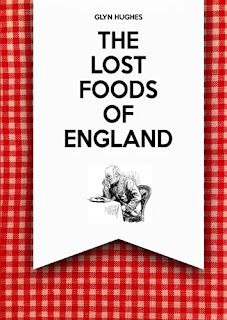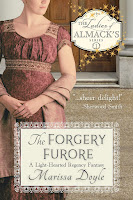This post was inspired by a social media post I recently ran across that I found fascinating, and had to share with you. It’s about a soup that never was.
Yes, that’s right: a historical soup that never seems to have existed in real life.
Brown
Windsor Soup appears in all sorts of modern cookbooks as an historical recipe,
a Victorian staple, and even as Queen Victoria’s favorite soup. In my copy of
Jane Garmey’s Great British Cooking*, it’s called a “hearty beef soup,
once extremely fashionable…. For many years, a particularly unappetizing
version was continually served by British Railways in their dining cars, which
may explain its present demise.” It appears in the Unofficial Downton Abbey Cookbook and several other modern volumes of Victorian cookery.
There’s only one problem: were you to go back in time to the Victorian era and, say, try to order it in a restaurant, they wouldn’t know what you’re talking about. Brown Windsor Soup didn’t actually exist, according to food scholar Glyn Hughes, author of The Lost Foods of England (which is totally on my to-buy list!)
When
Hughes was beginning research on his book documenting English gastronomy, Brown
Windsor Soup seemed like an easy topic to start with; everyone knew what it
was, and even had memories of the dreadful version served on trains (see Jane
Garmey’s comment above.) But when he started consulting Victorian cookbooks, he
could find no mention of it—anywhere. Intrigued, he pored through the British
Newspaper Archive and even paid researchers to comb through the records of the
National Railway Museum. There was nary a single mention of it in Victoria’s
reign. Certainly recipes for hearty beef soups existed, but not under this
name. Not until the 1920s did it begin to appear in cafeterias and cafes (and likely railway stations dining rooms) as a filling, if dubious and dreary, menu item.
So where did the legend of Brown Windsor Soup as a Victorian staple come from?
Hughes points to a few things, among them toiletries and radio.
It
seems that there was a Windsor Soup, or potage à la Windsor, on her majesty’s
menus. It was the creation of Charles Francatelli, one of the queen’s chefs whom we’ve met before. But Francatelli’s Windsor Soup was a creamy white soup
made with rice, not brown and beefy...and while it’s not known to have been a particular favorite of
her majesty, Francatelli’s cookbook was a staple in Victorian households for
decades. Other Victorian cooks created their own Windsor soups, but again, most borrowed heavily from Francatelli’s recipe, and were decidedly white.
But there was Brown Windsor Soap—a toiletry that was well known as a favorite of Queen Victoria (and Napoleon!), complete with a picture of Windsor Castle on its packaging (and still available today.)
And then there was The Goon Show. This popular (and very goofy) radio show of the 1950s (featuring Peter Sellars in his pre-Inspector Clouseau/Pink Panther days—if you ever have a chance to hear them, do!) latched onto “Brown Windsor Soup” as a recurring comedic gag, a stand-in for all stodgy English cuisine (and, by extension, stodgy Britishness.)
Might all of these—a real Windsor soup, a very popular product with a similar name, and the hilarity of radio—have mixed themselves up with a twentieth century invention into a sort of cultural pseudo-memory? Hughes thinks so—and is astonished by the resistance to his research by people who are convinced to this day that they used to eat Brown Windsor soup on trains.
* * * * *
Not
imaginary or Victorian is that there is currently a giveaway for The Forgery Furore, the first installment in my new Regency fantasy series The Ladies of
Almack’s, on Goodreads. You can enter it here; entries are open till March 20.
Good luck!
*Amazon affiliate links are used in this post.



How funny! That book sounds interesting. Have you read The British Baking Book by Regula Ysewijn? It's part history book and part cookbook. She includes Jane Austen's favorite, Sally Lunn buns and Bath buns which is what Jane actually said she disordered her stomach eating. The history behind certain baked goods is really interesting and the part I miss most about the Great British Baking Show when it switched networks/to Netflix.
ReplyDeleteI haven't seen that, but it looks really good--thank you! *off to Barnes and Noble's website...*
ReplyDeleteForgot to add--my family spent a lot of time when I was a tween/teen on Martha's Vineyard, and there was actually a British bakery up-island in Chilmark; I remember visiting it with my mom when I was about 12, and the two of us going a little crazy wanting to buy one of everything to try.
ReplyDelete